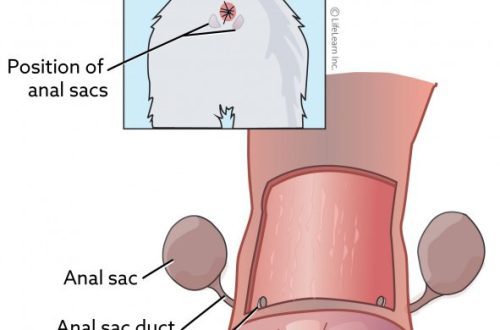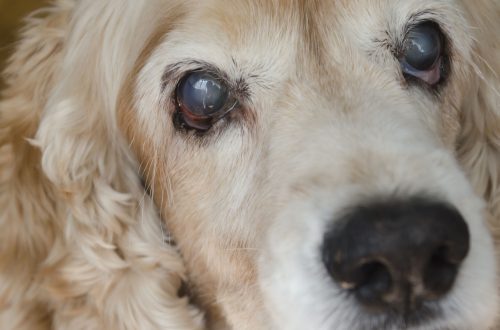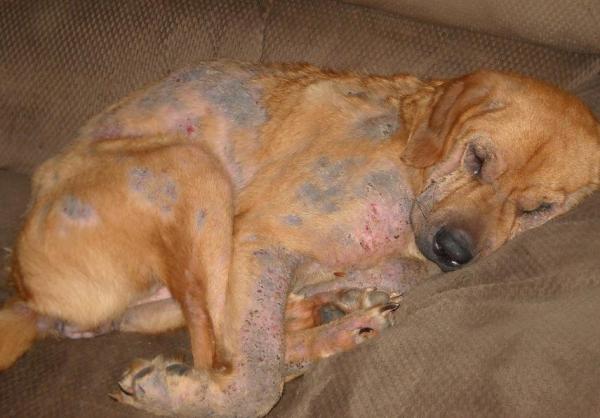
Шуга код паса
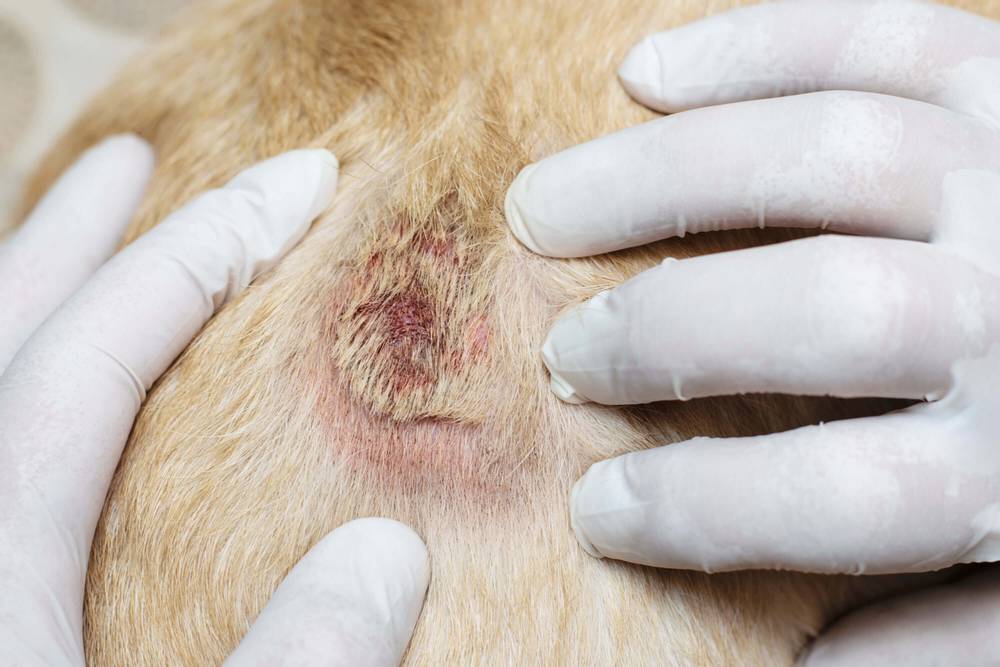
Садржај
Scabies in Dogs Essentials
The causative agent of scabies is the smallest parasitic mite that feeds on lymph, tissue fluids and skin particles;
The main symptoms include itching, peeling, crusts, alopecia (bald patches);
With timely diagnosis, treatment is not difficult;
Regular use of antiparasitic drugs helps to avoid infection.
Узроци шуге
The main cause of itching in an animal will be a strong allergic reaction to ticks and their waste products. This reaction usually occurs 2-3 weeks after infection. If an animal has already been affected and cured in its life, then with repeated infection, the reaction occurs much faster, in just 1-2 days. This is due to the fact that the body has already met with this antigen and knows how to act. If the pet has good immunity and the correct immune response is formed, then the infection can proceed without signs of itching, and even self-healing is possible. Another cause of scratching can be a secondary infection of the skin. Bacteria that have fallen on damaged skin can also cause severe itching due to increased reproduction.
Demodecosis (demodex canis)
This is an intradermal tick, which is the smallest representative of its kind, its dimensions reach only 0,25-0,3 mm. Its habitat is the hair follicles. Unlike other tick parasites, Demodex is a normal inhabitant of the animal’s skin. With careful examination of skin scrapings from healthy dogs, demodex can be found in all animals. It gets on the skin of newborn puppies from the mother in the first 2-3 days of life. It is able to cause a disease (demodecosis) only against the background of a decrease in immunity in a dog. That is, a dog suffering from demodicosis is not infectious for other animals. The tick cannot live in the environment. The disease can manifest itself in two forms: localized and generalized. The plan for further treatment and prognosis will depend on the established form. Itching for demodicosis is not typical, but may occur with secondary infection.
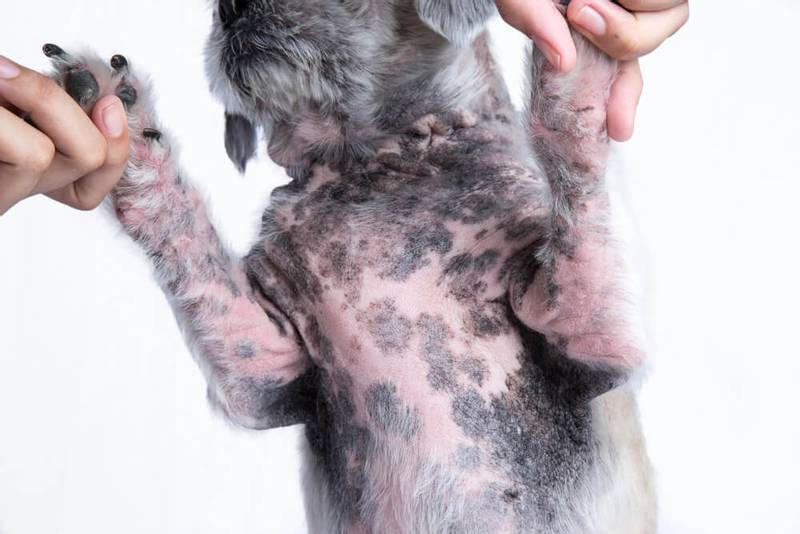
Cheyletiella yasguri
Heiletiella is a mite that lives in the superficial layers of the skin. On the skin and coat, parasites of light yellow or white color can be found, the size is small (0,25-0,5 mm). The parasite itself cannot be seen with the naked eye, but a large amount of dandruff on the skin can be noted, the second name for this disease is “wandering dandruff”. Ticks feed on skin particles, lymph and other fluids, and during a bite they can cause itching in an animal. Infection occurs mainly from sick animals. In the environment, the tick is not able to reproduce, but can live up to 2 weeks under favorable conditions.
Otodectes (otodectes cynotis)
This mite infects the skin of the external auditory canal in an animal. It is extremely rare in dogs. Its dimensions reach 0,3-0,5 mm. The tick feeds on lymph, tissue fluid and skin particles. During bites, the tick severely injures and irritates the skin. He also has a rather rough body and moves very actively, which also causes a sensation of itching and burning in the dog. This mite is a common parasite for many animal species. Dogs get infected from other pets, including cats. For a short time, the tick is able to live outside a living organism, that is, it can be brought into your home on clothes and shoes.
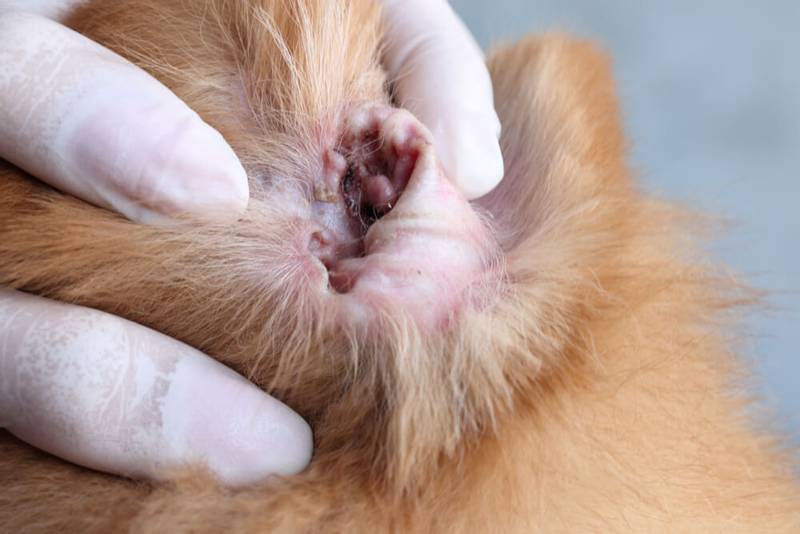
Sarcoptosis (sarcoptes scabiei)
Ticks from the genus Sarcoptes are the smallest parasites of yellow-white or white color, which are visible only with a microscope, their size reaches only 0,14-0,45 mm. In addition to dogs, they can also infect other canids (raccoon dog, fox, wolf), which often serve as a source of infection for a dog walking in the forest. Their habitat and reproduction is the epidermal layer of the skin, that is, the surface. They feed on inflammatory fluid, lymph, epidermal cells. Sarcoptic mange is a highly contagious disease. Infection is possible even through indirect contact. Indoors, ticks can live up to 6 days, but under favorable conditions (high humidity and temperatures from +10 to +15 ° C), they are able to survive and be infectious for up to three weeks.
It is sarcoptic mange that is called true scabies in dogs, so we will dwell on this disease in more detail.
simptomi
The classic sign of true scabies (sarcoptic mange) is severe itching. The first symptoms in a sick animal are small red pimples with a crust in places with little hair (ears, elbows and heels, lower chest and abdomen). This is where the mite enters the skin. An animal that experiences active itching begins to scratch itself intensively and injure itself. After that, scratches, bald spots, thickening and darkening of the skin, redness can already be noticed on the skin. Often there are scales, crusts, scabs in the head and ears. In the absence of treatment, a secondary infection begins to join, most often various bacteria (cocci and rods). Further, these lesions begin to spread throughout the body, systemic manifestations of the disease begin, such as an increase in superficial lymph nodes, refusal to eat, exhaustion. In the last stages, intoxication, sepsis and death of the body are possible. Sometimes it is also possible to observe an atypical course of sarcoptic mange: itching may be weak or absent altogether, parts of the body other than the classical course (back, limbs) may be affected. Also, scabies in dogs can be asymptomatic, the animal looks healthy, but is able to infect others.
Методе инфекције
Infection with sarcoptic mange occurs by contact. That is, when a healthy dog communicates with a sick dog, the risk of infection is very high. Ticks are very mobile and easily move from one animal to another. Sometimes the source may be an asymptomatic carrier, that is, a dog that does not have any clinical manifestations of the disease. In rare cases, infection is possible even through care items or bedding. Foxes, arctic foxes, raccoon dogs, wolves can also be a source of the disease. Stray dogs and wild animals are natural reservoirs of the disease.
Other tick-borne diseases are transmitted in a similar way, however, unlike Sarcoptes, ticks such as Cheyletiella and Otodex, in addition to dogs, can also parasitize cats.
The demodex mite is considered a normal inhabitant of the dog’s skin, and clinical signs develop with a decrease in the overall immunity of the body. At risk are small puppies, elderly animals, animals with endocrine diseases, oncological processes, immunodeficiency. Thus, it is impossible to get infected from an animal with demodicosis.
Dijagnostika
The diagnosis is made on the basis of the animal’s life and illness history, information about the dog’s contact with sick animals will be especially valuable. It is also very significant clinical examination, detection of typical lesions on the skin (peeling, crusts, alopecia, scratching). The diagnosis is confirmed by microscopy of skin scrapings. False-negative results are not uncommon, but the success of trial therapy can also confirm the diagnosis.
Treatment for scabies in dogs
When the disease is detected in the early stages, the treatment of scabies in dogs is not difficult. On the modern market there are a large number of effective safe drugs that can cure this disease. Isoxazoline drugs are currently considered the drug of first choice. These include fluralaner, afoxolaner, sarolaner. These drugs are sold in tablet form and are very convenient to give to an animal. Also, preparations of the group of macrocyclic lactones can help get rid of the scabies mite in a dog. Typically, such drugs are released in the form of drops at the withers with the active substance selamectin or moxidectin. They are applied to intact skin in the area of the withers of the animal. Usually several repeated treatments are required, the interval between them and the total number can only be indicated by the attending physician, based on the degree of damage to the animal by the tick. After treatment, the pet is recommended not to wash for at least 3 days or longer in order to avoid reducing the effectiveness of the drug.
In the presence of a secondary infection, local antibacterial or antifungal treatments are prescribed. Shampoos with 3-5% chlorhexidine or benzoyl peroxide are commonly used. With deep infection or the threat of sepsis, systemic antibacterial drugs can be prescribed in high dermatological dosages for a long course. In the case of a general unsatisfactory condition, intravenous injections, droppers, and inpatient observation may be indicated.
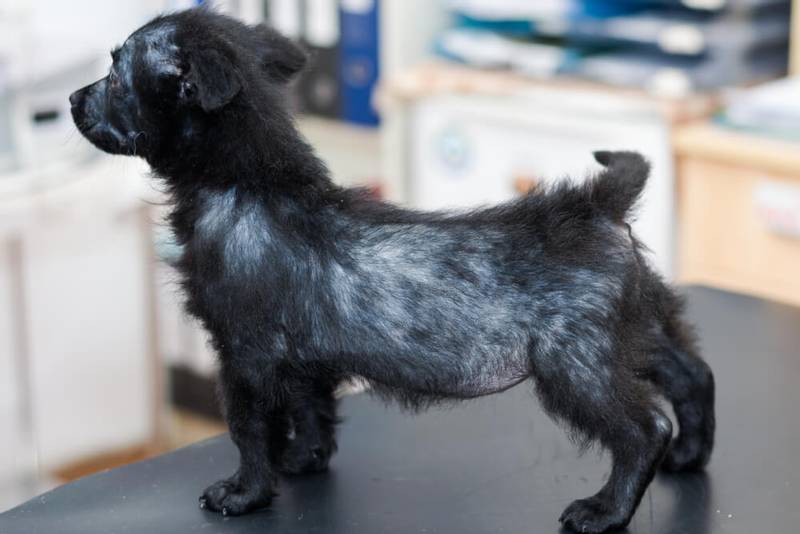
Photo of scabies in dogs
Превенција
The best preventive measure is the regular use of anti-tick drugs according to the instructions. These include the same drugs that were described in the “Treatment” section, but the interval between their use will be longer.
Also, a significant role should be assigned to the good immunity of the animal. To strengthen it, the pet must receive high-quality nutrition, regular exercise, undergo an annual medical examination at a veterinary clinic for early detection of various abnormalities.
Can a person get infected?
Sarcoptic mange is not a common disease for humans and animals, but it can cause the so-called “pseudo-scabies” in humans. It is characterized by itching, various skin lesions, scratching of the hands, neck, and abdomen. In human skin, a tick cannot multiply and, accordingly, does not gnaw through passages there. But the appearance of red pimples (papules) may be due to an allergic reaction to the waste products of the tick. That is, scabies from a dog to a person can be transmitted, but treatment for a person is not required. The tick goes away 1-2 weeks after the dog recovers or stops contact with the infected animal. With severe itching, you can take antihistamines as prescribed by a medical doctor.
Чланак није позив на акцију!
За детаљније проучавање проблема препоручујемо да контактирате специјалисте.
Питајте ветеринара
Јануар КСНУМКС КСНУМКС
Ажурирано: 22. маја 2022



